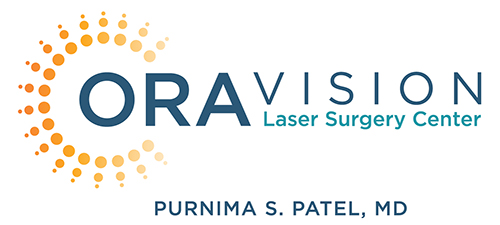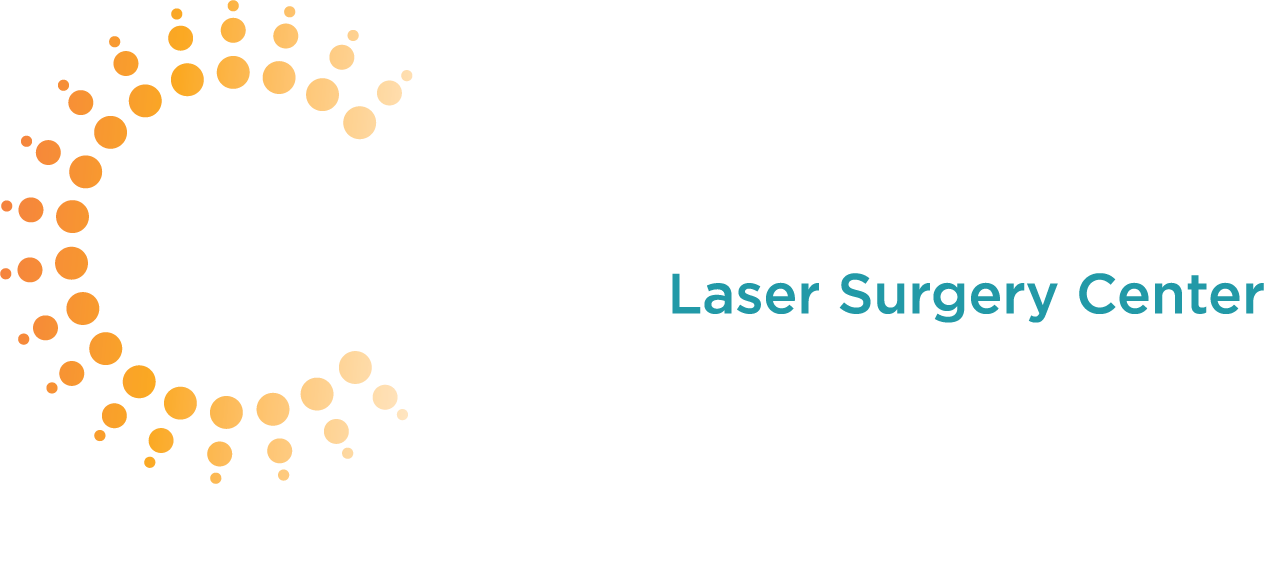
Cataracts
Sight is our most precious sense, enabling us to enjoy and function in the world we live in. In past centuries, the development of cataracts doomed a person to significant lifestyle limitations as well as, in some cases, eventual blindness.
Today’s modern microsurgical techniques allow for a true modern day miracle that restores sight to most cataract patients. It is no longer necessary to give up activities such as reading and driving due to cataracts.
One of ORA Vision’s specialties is restoring sight to people whose eyesight has been impaired by cataracts. Our techniques meet or exceed standards of excellence and have attracted patients from across the state of Georgia. Dr. Patel employs state of the art equipment in a comfortable and convenient location. Her team is experienced, caring and patient-focused. Our passion is helping people see better!
How We See
The miraculous process of sight occurs when the eyes and the brain work in harmony to transform light images into sight. Light rays first pass through the transparent cornea, which focuses them through the pupil to the lens. The lens is made of a clear, flexible gel surrounded by the transparent lens capsule. When light rays reach the lens, it adjusts its shape to fine-focus the images onto the retina which covers the back of the eye. Once the retina has received the light images, it translates them into electrical impulses. The optic nerve carries these impulses to the visual cortex of the brain, where they are interpreted into sight.
When any part of the visual system is not working properly, the process of sight can be interrupted. One of the most common problems which can affect vision is a cataract. Almost everyone who lives a long life will eventually develop cataracts.
What is a Cataract?

Inside our eyes, we have a natural lens. The lens bends (refracts) light rays that come into the eye to help us see. The lens should be clear, like the top lens in the illustration. Almost everyone who lives a long life will eventually develop cataracts.
The term cataract is used to describe a natural lens which has turned cloudy, usually as part of the natural aging process. Cataracts are not a growth, a film, or a type of cancer. Light cannot pass through a cataract easily, so the retina only receives blurred and distorted images. The retina is then unable to send clear signals to the brain, and vision is gradually impaired. If cataracts are not removed, blindness can eventually result.
Cataracts develop for a number of reasons, but the most common cause is aging. Age-related cataracts develop as a result of natural changes within the lens. In other cases, an injury or blow to the eye may cause a traumatic cataract. Some cataracts may also result from the use of certain drugs, exposure to harmful chemicals, excessive amounts of ultraviolet radiation (UV rays), or some diseases. In addition, a small number of babies are born with congenital cataracts as a result of unusual prenatal factors. Very infrequently, cataracts can develop during childhood. Fortunately, almost all cataracts can be successfully removed and vision restored through modern microsurgery.
What Are the Symptoms of Cataracts?
Because cataracts form in different ways, the symptoms of cataracts are variable. Most people notice that their vision gradually deteriorates, objects may begin to look yellow, hazy, blurred or distorted. Many people also find that they need more light to see clearly, or that they experience glare or halos from lights at night. Other common problems include increasing nearsightedness, double vision, or the appearance of dark spots or shadows in the vision. In advanced cases, the cataract may be visible as a white or yellow-looking pupil.






A Comfortable, Patient-focused Experience
The ORA Vision team is dedicated to creating a comfortable and painless cataract surgery experience for our patients. Cataract surgery has evolved to a highly-refined procedure. Through a microscopic incision, Dr. Patel removes the cloudy lens, replacing it with a new crystal-clear artificial lens. The new artificial lens sits in the exact position as the natural lens without the need of sutures. The entire procedure is performed safely in a short amount of time with minimal discomfort. Only eyedrops or anesthetic gel are necessary to numb the eye. In most cases, only topical anesthesia is used rather than needles and injections.
Modern Laser Cataract Surgery
Dr. Patel uses the latest cataract surgery techniques to perform femtosecond laser-assisted cataract surgery. The laser allows for reduction in astigmatism, decreased energy use, and more precise lens centration. The incisions for cataract surgery are microscopic and self-sealing. Typically, no stitches are required. You can continue normal daily activities. Another advantage of no-stitch incisions is that they are less likely than other incisions to cause a focusing problem known as astigmatism. In fact, depending upon where the surgeon makes the incision, no-stitch incisions can actually reduce astigmatism which existed naturally before surgery.
During surgery Dr. Patel gently inserts specially-made small instruments into the eye to create a small round opening, known as a capsulorhexis, in the lens capsule. This can also be made with a laser to increase precision. Another instrument, called a phacoemulsification tip, is then inserted through this round opening. This state of the art device employs high-speed ultrasound waves, vibrating 40,000 times per second, to break the cataract into tiny pieces which are then gently suctioned out of the eye. A laser can be used to aid in the removal of these pieces and reduce the amount of energy used. This ultrasound-sound based procedure is currently the most effective method for removing cataracts.
Once the cataract has been removed a lens implant is placed in the lens capsule to replace the focusing power of the natural lens. Lens implants are very small and are designed to fit permanently within the lens capsule, where they fulfill most of the functions of the natural lens. They are made of special materials which require no care and which will not be rejected by the eye. Lens implants come in different powers, as do glasses or contact lenses, and are selected to improve the eye’s focusing ability.
Selecting the Right Implant for You
As you grow older, you may find your eyes are no longer able to work as well as they did 20 years ago. Dr. Patel can help you reverse the time! Everyone will develop cataracts (the clouding of your natural lens) at some point in their life. Fortunately, that cloudy lens is able to be replaced with advanced technology lens implants that can correct your vision making readers, bifocals and trifocals unnecessary.
Many people discover that lens implants improve their vision and give them greater freedom from their glasses than they enjoyed before they developaed cataracts.
Dr. Patel will evaluate the entire visual system to determine what is your best option to correct your vision depending on your vision goals. You will only need cataract surgery in each eye once in your life since the new artificial lens will last you forever. Cataract surgery is the perfect time to have your vision corrected. Dr. Patel can place a new lens in your eye to see distance clearly AND read up close. Your eyes will feel 20 years younger. Your medical insurance will assist with the cost of cataract surgery but does not pay for the vision correction portion. Having your vision corrected during cataract surgery and eliminating the need for those bifocals or trifocals is a lifetime investment.
With the latest technology, Dr. Patel can help you become less dependent upon glasses if that is your goal. If you do not mind wearing glasses, then Dr. Patel recommends staying with your glasses. Despite the lens selected, your vision will be sharper, more vibrant, and with better contrast after cataract surgery.
If your goal is to be free of your glasses, Dr. Patel will review several options for you. Glasses independence can now be achieved with the latest technology lens and laser.
The Risks and Benefits
Fortunately, cataract surgeries performed by ORA Vision LLC’s surgeons are highly successful procedures. In general, the few complications which exist with cataract surgeries are becoming even more unlikely with new developments in surgical techniques.

The very rare complication rate associated with cataract surgery is more than offset by the excellent results. Eye diseases or problems with the retina or optic nerve may limit the potential for clear vision even when the cataract surgery itself has been successful. At ORA Vision LLC, over 99 percent of cataract surgery patients enjoy good vision after their surgeries, when no other serious eye problems existed before the surgery.
Furthermore, there are numerous benefits of cataract surgery, many of which cannot be measured. These include:
- Improved Color Vision: Colors are brighter and more vivid after cataract surgery.
- Greater Clarity of Vision: Vision is crisper and sharper after cataract surgery.
- Improved Quality of Life: Studies have repeatedly shown that people enjoy improved quality of life after successful cataract surgery. Many people can resume driving, thereby gaining greater independence. Favorite activities such as reading, sewing, carpentry, baking or even using a computer are generally easier after cataract surgery. Even when retinal diseases or other problems prevent a total restoration of vision, the remaining vision is usually improved by a cataract surgery.
- Greater Freedom From Corrective Lenses: Because lens implants are selected to compensate for pre-existing focusing problems, most people find that their vision improves considerably after surgery. Ideally, people are able to see clearly without wearing glasses after surgery, although glasses may be necessary for some activities such as reading or driving. Even people who still need to wear glasses most of the time can usually have thinner lenses than they relied upon in the past. The only minor drawback of this improved eyesight is that most people will need to replace their glasses after surgery, even if they only need to use them occasionally.
Why Choose Us for Your Cataract Surgery?
- You will enjoy the benefits of your improved vision for years to come.
- We pride ourselves in creating the most caring team with years of experience.
- Comfortable surgery experience in our advanced surgery suites
- We customize the latest technology and most advanced techniques to get the best outcomes for your eyes
- A seamless, stress-free process
- You will have a full consultation with Dr. Patel and get all of your questions answered
After Your Surgery
A cataract operation is relatively brief, usually lasting between 10 to 15 minutes. Once the surgery has been completed, the patient is escorted into the recovery area. After being monitored and receiving simple instructions on eye care, you will be free to go home. Most people appreciate being able to resume their regular activities soon after surgery.


